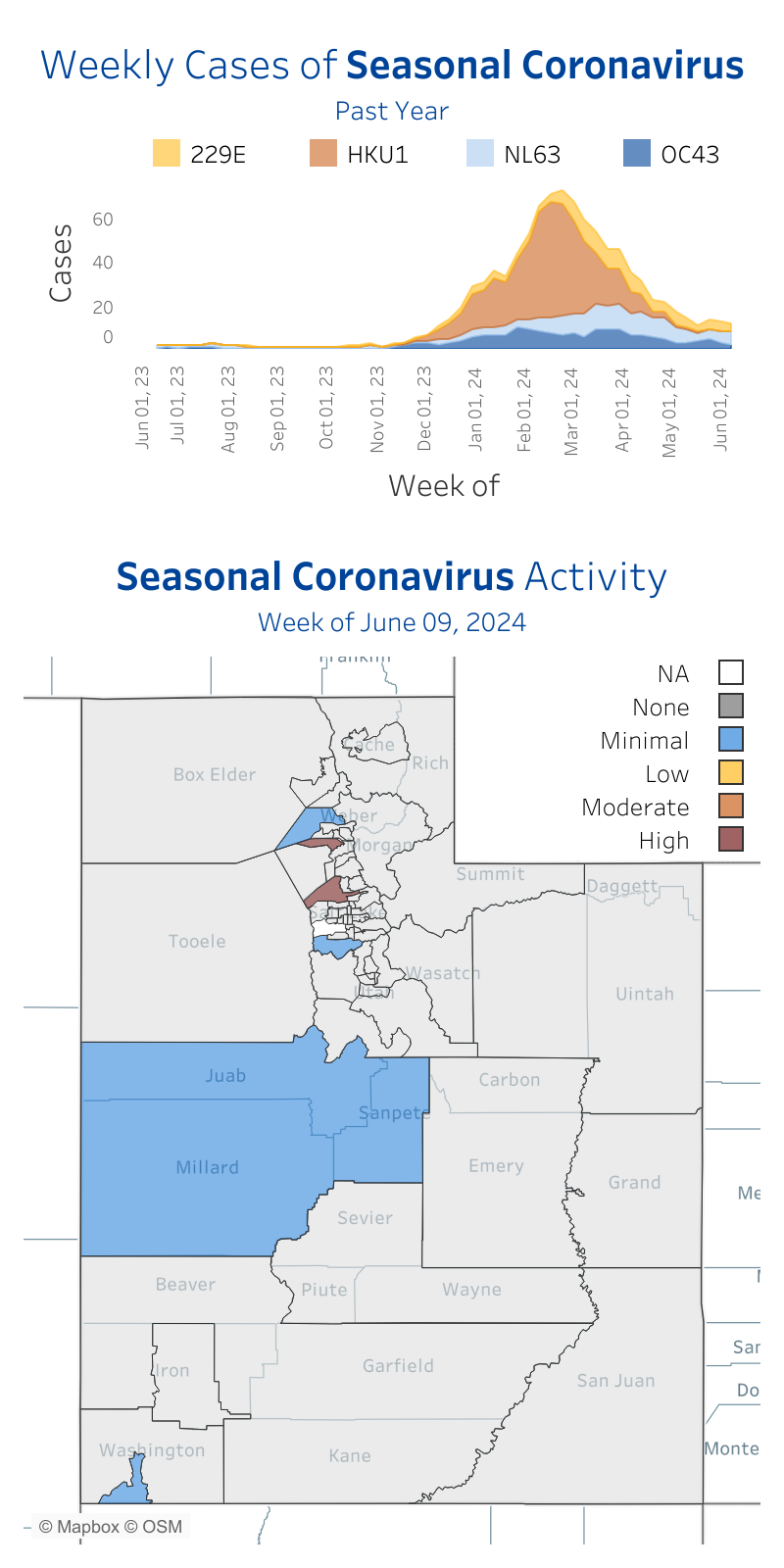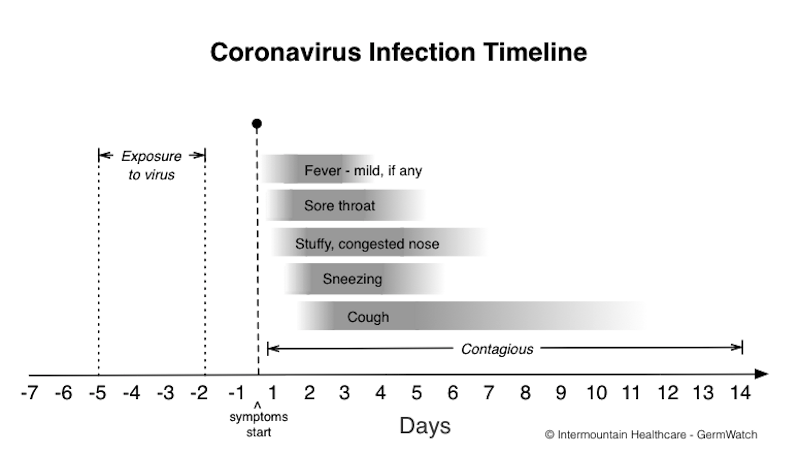Germ Profile
Germ Type: Virus
Season: Fall, winter
Human coronavirus refers to a group of viruses that cause the common cold around the world. Young children are most likely to get infected, but people can have multiple infections over a lifetime – and most people on the planet will get sick from coronavirus at one time or another. These viruses typically cause cold-like symptoms: runny nose, cough, and sore throat. The coronavirus SARS and the novel coronavirus (AKA Covid019) that appeared in Wuhan China in December 2019 can cause life-threatening illness. For more information about Coronavirus COVID-19 in Utah, please click here.
Seasonality
In the United States, coronavirus infections are most common in the fall and winter. However, you can get infected at any time, as coronaviruses circulate year-round.

Signs and Symptoms
Coronaviruses usually cause “common cold” symptoms like runny or stuffy nose, sneezing, sore throat, headache, cough, mild fever, and body aches. Infection can sometimes lead to an ear infection or trigger an asthma flare-up in person with asthma. More serious lung problems such as pneumonia are less common and happen most often in the elderly and in people with weakened immune systems.
Infection Period
Symptoms of coronvirus infection are those of the typical cold, including sore throat followed by nasal symptoms (runny and congested nose) and sneezing and then cough.

How It's Spread
Scientists don’t know much about how coronaviruses (other than SARS) are spread. Most likely, they are spread person to person through coughs, sneezes, laughs – anything that produces a spray that can be inhaled by someone else. Close personal contact (e.g., a handshake or a kiss) is another likely way to spread coronavirus infection.
Diagnosis and Treatment
Providers usually diagnose coronavirus by taking a medical history and doing a physical exam. The provider may also choose to verify the diagnosis by testing a sample of mucus from the mouth or nose, or by ordering a blood test.
What can I do today?
1) Practice prevention and stop the spread:
- Cover your sneezes and coughs.
- Wash your hands often and well, and have children do the same.
- Use a tissue once, then throw it away and wash your hands.
2) Call your child’s doctor if you notice:
- Wheezing (a whistling sound when breathing in or out).
- Fast breathing (more than 40 times a minute) or very difficult breathing (retractions, or using the stomach muscles when breathing).
- Fever that lasts longer than 3 days – or fever higher than 100.2°F in an infant 3 months or younger.
- Fussiness, poor eating, sleepiness or low energy in a baby.
- Signs of an ear infection – complaining about ear pain, tugging or rubbing the ear, etc.
- Any other severe symptoms or symptoms that last longer than 7 days
Disclaimer: The contents of this website are not intended to be a substitute for professional medical advice, diagnosis, or treatment.